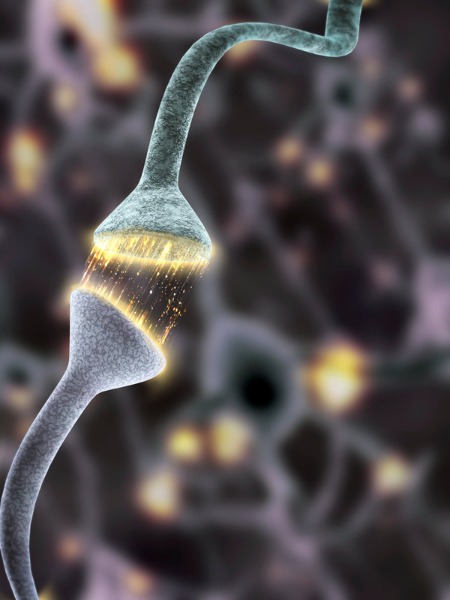Oct. 3, 2023 Research Highlight Medicine / Disease
Extra-large synapses could be a cause of schizophrenia
The discovery that a subset of schizophrenia may be due to an overabundance of extra-large synapses in the brain could lead to new treatment approaches
Schizophrenia may be associated with the excessive formation of oversized and hyperactive synaptic connections between nerves in the brain, a mouse model and a human post-mortem study by RIKEN researchers suggests1. This finding points to potential new modes of treatment for this challenging brain disorder.
“The dominant explanation for schizophrenia suggests it is due to changes in the density of synapses, but the strength of the synapses has been overlooked,” says Akiko Hayashi-Takagi from the RIKEN Center for Brain Science. “We’ve now found evidence implicating the appearance of a small number of extra-strong synapses.”
Synapses are locations in the brain where nerve cells connect and send messages to each other (Fig. 1). Hayashi-Takagi says these extra-large, extra-strong ‘aristocratic’ synapses can bypass the normal ‘democratic’ integration of input from all synapses, thereby taking control over the firing of neurons receiving input from the synapses. This is thought to affect the performance of the working memory—a key aspect of schizophrenia symptoms.
The extra-strong synapses were found in two forms of genetically modified mice that are generally accepted as being animal models of schizophrenia.
Convincing evidence of the relevance of the mouse findings to humans came with the discovery that the extra-strong synapses were more abundant in post-mortem brain tissue samples from patients with schizophrenia than in those of matched controls.

Figure 1: Extra-strong synapses could play an important role in psychiatric disorders such as schizophrenia, a study by RIKEN researchers finds.© EQUINOX GRAPHICS/SCIENCE PHOTO LIBRAR
One reason why synapse strength had been largely ignored previously is that synapses are very challenging to manipulate and study, Hayashi-Takagi thinks. “I’ve been working on this issue for seven years to get to this point,” she says.
Hayashi-Takagi and her team now intend to look for evidence supporting their hypothesis in human tissue from living brains. While samples cannot ethically or safely be taken directly from a patient’s brain, they can be extracted from surgically removed tissue surrounding glioma brain tumors.
“Glioma is an invasive malignant cancer, so the surgeon must remove the tumor along with a margin that contains healthy neurons,” Hayashi-Takagi explains. “We would like to quantify the human synapse parameters in these samples and integrate these human data into a computational model. As far as I know, no simulation has ever been implemented by using actual data from human synapses.”
The research has potentially profound implications for treating schizophrenia. Since extra-strong synapses are very stable and difficult to disrupt, Hayashi-Takagi thinks drugs might not be the best solution. A better approach might be to explore techniques that affect the circuits in the brain using neurofeedback, electrical or magnetic stimulation, she suggests.
Related contents
- Molecular over-reaction to ribosome stalling leads to cognitive disorders
- Astrocytes help orchestrate synaptic activity in learning and memory
- Anti-hyperlipidemia drug improves brain connectivity in mouse models of schizophrenia
Rate this article
Reference
- 1. Obi-Nagata, K., Suzuki, N., Miyake, R., MacDonald, M. L., Fish, K. N., Ozawa, K., Nagahama, K., Okimura, T., Tanaka, S., Kano, M. et al. Distorted neurocomputation by a small number of extra-large spines in psychiatric disorders. Science Advances 9, eade5973 (2023). doi: 10.1126/sciadv.ade59731
